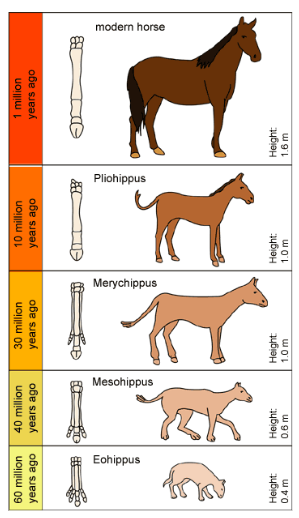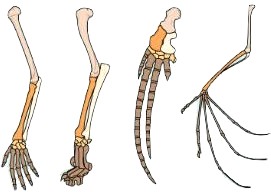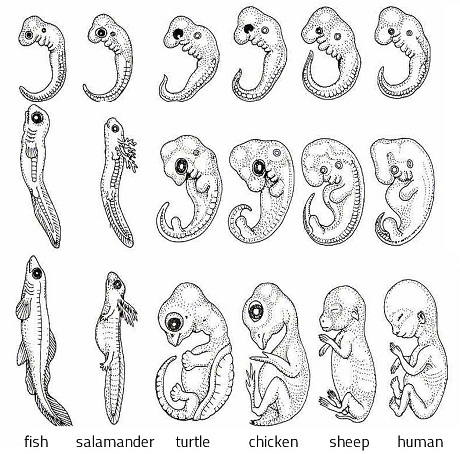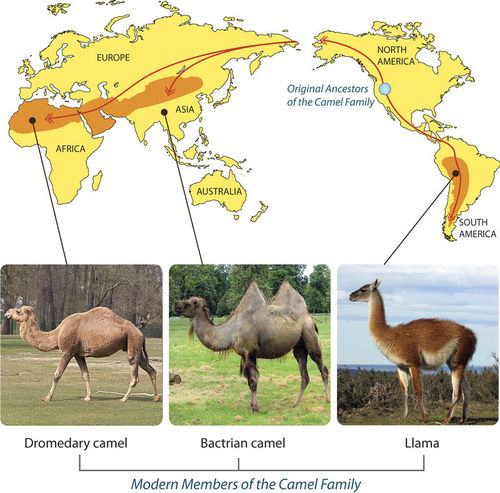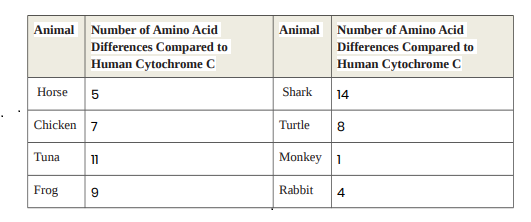The Evidence of Evolution
1. Fossil Evidence
Transitional forms reveal links between groups.
- Archeopteryx
- Therapsids
- Ambulocetus
- Various hominid species that existed prior to homo sapiens
Horse evolution shows several transitional species
2. Anatomical Evidence
- Homologous structures - similar origin but might serve different functions in different species. (example, forelimbs of vertebrates)
- Vestigial structures - features that have lost their original function (examples: tailbones in humans, pelvic bones of whales)
3. Embryological Development
During development, all vertebrates have a post-anal tail and paired pharyngeal pouches.
-- In fish and amphibian larvae, the pouches become gills.
-- In humans, the pouches becomes the middle ear; tonsils, and glands
4. Biogeographical Evidence
The distribution of species across different geographic regions and how these patterns can provide insights into their evolutionary history
- island biogeography
- distribution patterns
- endemic species
5. Biochemical Evidence
-- Living organisms use the same basic biochemical molecules
-- Same DNA triplet code and the same 20 amino acids in their proteins.
- Gene sequence changes can track changes in populations
- Hemoglobin protein is similar in related species (human and chimpanzee)
- Variations in cytochrome-c used to infer evolutionary relationships
- Viruses (like Ebola) also change over time, changes can track origin
Assignments
Predicting Evolutionary Relationships with Cytochrome C
Changes in Anole Lizards in Response to an Extreme Cold Event
